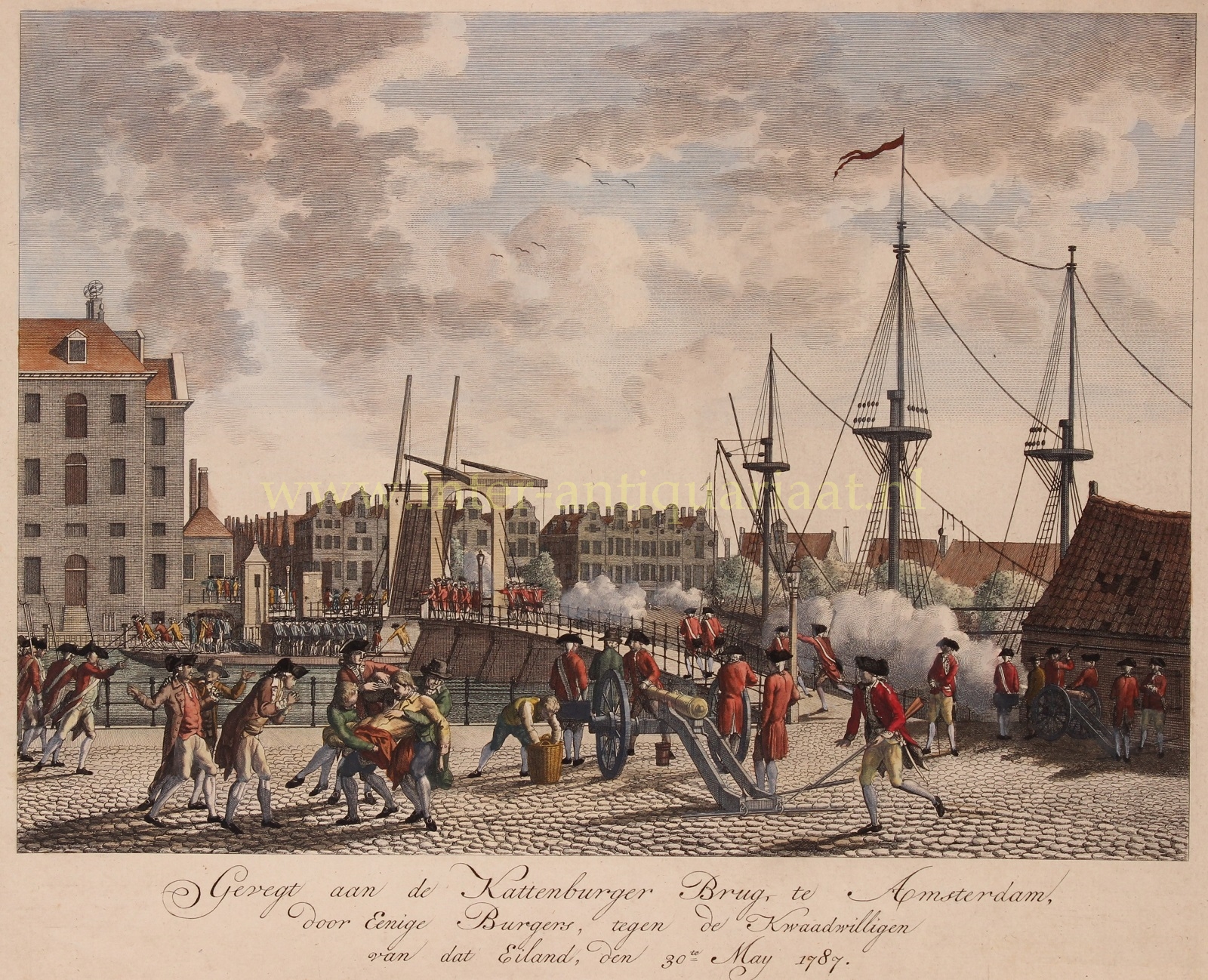“BIJLTJESOPROER” IN AMSTERDAM, 1787
“Gevegt aan de Kattenburger Brug, te Amsterdam, door Eenige Burgers, tegen de Kwaadwilligen van dat Eiland, den 30te May 1787”. Anonymous engraving made in in 1787 and coloured by a later hand. Afm (plate) 26,3 x 31,5 cm.
The “Bijltjesoproer” [Hatchet Riot] or “Kattenburgoproer” [Kattenburg Riot] of 30 May 1787 was an uprising of Dutch Orangist ship carpenters in the Kattenburg quarter of Amsterdam against the city’s Patriot regenten. These labourers were nicknamed “Bijltjes” (“Hatchets”, after their most important tool); hence the name Bijltjesoproer.
Towards the end of the 18th century, tensions rose between Orangists, who sought to preserve the historic position of the House of Orange, and Patriots, who desired a democratic republic and the abolition of medieval privileges and aristocracy. The Amsterdam ship carpenters held strong Orangist convictions, as did many other ordinary citizens. On the other hand, the Patriot movement was gaining strength since 1780, started arming themselves in 1783 and eventually seized control in several cities throughout the Netherlands, such as Utrecht. The country was on the brink of civil war, and in September 1786 two brief skirmishes took place in the towns of Hattem and Elburg when they were occupied by Patriots and quickly retaken by troops loyal to stadtholder William V, Prince of Orange. On 9 May 1787, the first pitched battle occurred near Jutphaas in the province of Utrecht, resulting in a Patriot victory. This rapidly escalated tensions between the two factions across the Republic.
A few weeks later, the Kattenburg Orangists rose against the regenten of Amsterdam, who held predominantly Patriot sympathies at the time. The day on which this revolt was violently repressed, has become known as “Bijltjesdag” [Hatchet Day]. Nowadays, this term is common in the Netherlands to refer to the moment of retribution after a time of oppression.
This engraving shows a fight between the Patriots and the Orangists on the Kattenburgerbrug in Amsterdam. In the background ‘s Lands Zeemagazijn (the present Dutch Maritime Museum) on the Kattenburgerplein.
The Patriots are ready with their guns. The Orangists however, have opened the bridges and can hold back the Patriots for a while. Eventually, the Patriots manage to reach Kattenburg and wreak havoc there. Johannes Rannink, the leader of the Orangists, is killed during the fight.
Literature: Frederik Muller “De Nederlandsche geschiedenis in platen” (1863-1882), nr. 4821a.
Price: SOLD


